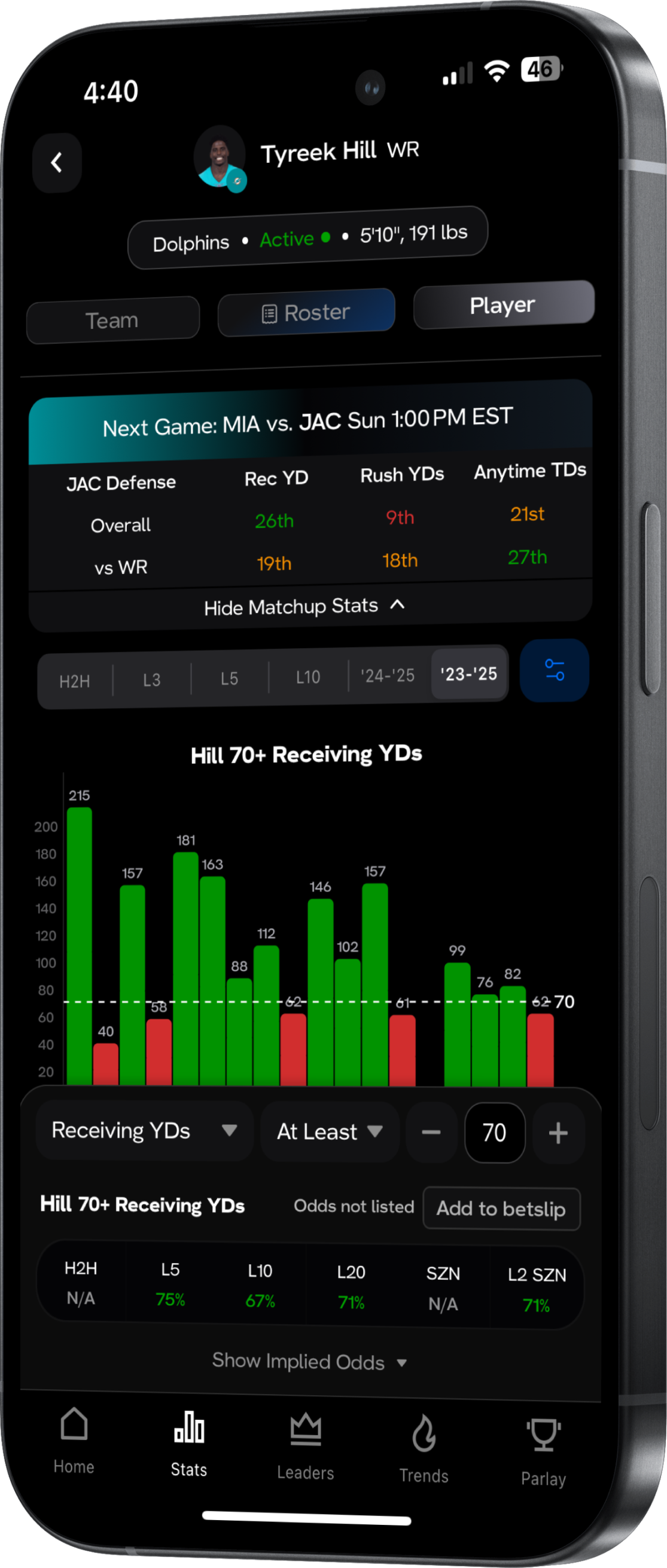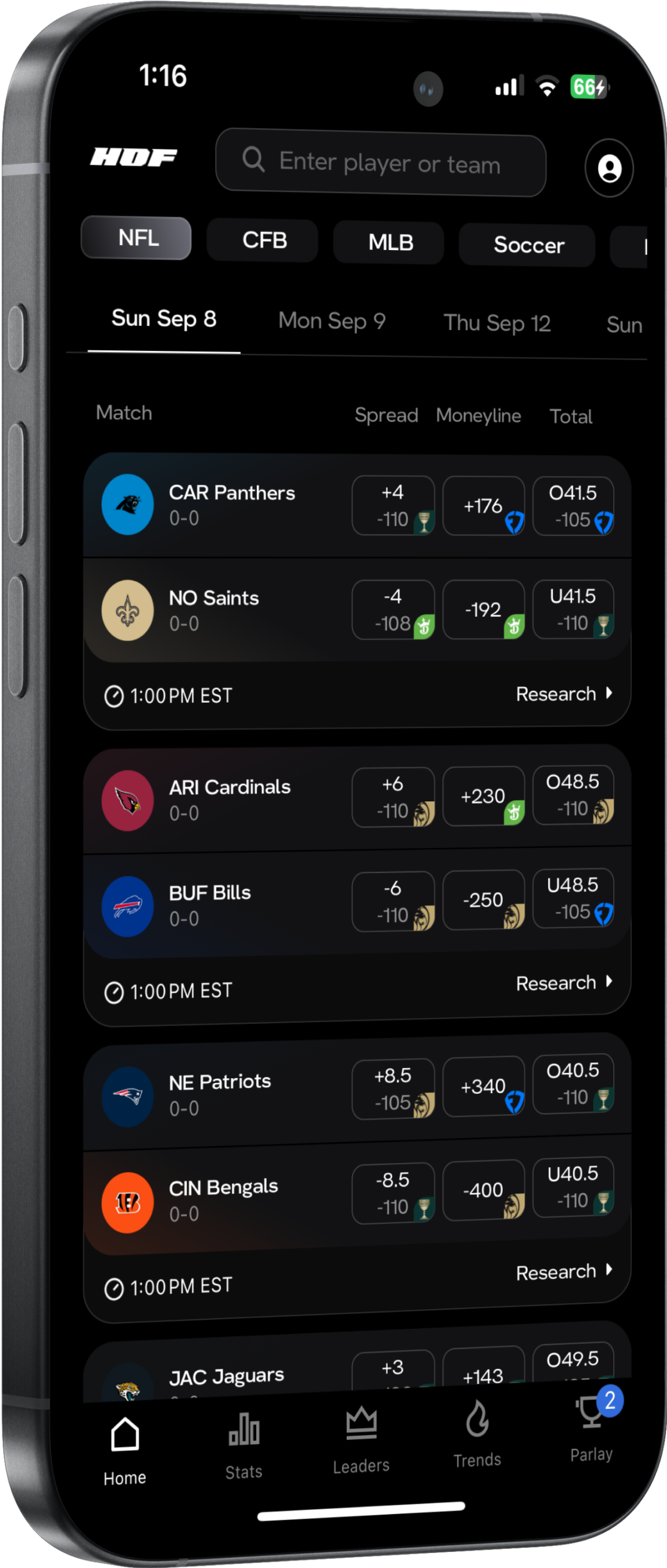Welcome to another installment of our series aimed at turning you into an educated bettor. In this episode, we'll demystify two terms that often create confusion for newcomers to the betting world: “Opening Lines” and “Closing Lines.” We'll discuss what they are, how they differ, and why understanding them is crucial for making profitable bets.
Opening Lines: Setting the Stage
The “Opening Line,” also known as the “Initial Line,” is the first set of odds offered by sportsbooks for a particular game or event. Bookmakers determine these odds based on various factors like team form, injuries, and public opinion, aiming to create a balanced market.
These lines are set with the intention of creating this ‘balanced market’ – with equal wagers coming on both sides of the action. However, bookmakers are smart and will move lines to account for a variety of factors, from an imbalance of wagers on one side of a bet, or even factors relating to the game such as a player suspension or inclement weather. Seeing where the line begins is essential as it can paint a picture of where a game should be looking at and can be all the more informative for seeing the movement of a line leading up to a game.
Closing Lines: The Final Verdict
In contrast, the “Closing Line” is the last available odds offered just before the event starts. These lines are usually the most accurate, as they incorporate all the information that has come to light since the opening line was set, including public betting patterns.
Closing lines are one of the most important aspects in betting and is something that sharp bettors in particular place an immense amount of value on, particularly when it comes to calculating Closing Line Value (CLV), another topic to be discussed in a future blog post.
Now, let’s examine how a real-life example could play out for the movement from an opening line to a closing line.
Enjoy educational content like this? Make sure to follow Hall of Fame Bets on our socials @hofbets on Twitter and TikTok and @hof.bets on Instagram, or checkout our website for more insights like these.
Example of Line Movement in NFL Week One – Jacksonville Jaguars vs. Indianapolis Colts
Week 1 of the NFL season features a tough divisional matchup between the Indianapolis Colts and the Jacksonville Jaguars. Let’s say that the opening line was set with the Jaguars as 7-point favorites over the Colts. Bettors, guided by last season's performance, analytics, and a host of other factors would start placing their bets.
As bets start coming in, people are considering factors like team performance, injuries, player stats, and utilizing sports betting analytics to decide which side of the bet to take. However, in the past week, the news broke that star running back Jonathan Taylor is officially out for the Colts in week 1, which is a significant blow to the Colts’ chances of upsetting the Jags.
Within hours of this announcement, there was a flurry of activity in the betting world. The absence of a star running back has a noticeable impact on the team’s projected performance. The line would have moved more so in the favor of the Jags, and would likely have them as even heavier favorites all of the way up until kickoff.
This movement indicates that without Jonathan Taylor, the Colts are now less favored and are expected to lose by an even greater margin.
By the time the game is about to start, the line has settled at Jags -9.5, making it the official closing line. Those who bet on the Colts at +7 before the news broke might be regretting not waiting, while those who managed to lock in the Jaguars at -7 are in a good position to profit, demonstrating why every point matters in sports betting.
This hypothetical scenario underscores the importance of not only watching opening lines but also tracking how they shift to become the closing lines. Understanding the factors that influence these movements can offer insights into public perception, team dynamics, and potential value spots in your betting strategy.
Now that we understand the technical definitions of both of these terms and have seen an example of how they can play out, let’s break down some of the key differences between the two and see what more there is to learn.
Key Differences Between Opening and Closing Lines
- Timing: Opening lines come out well in advance, while closing lines are the odds just before the event starts.
- Accuracy: Closing lines are generally more accurate, given that they have the benefit of all available information.
- Public Influence: Opening lines are more influenced by the sportsbook's perception, while closing lines are typically affected more by how the public is betting.
- Profit Potential: Savvy bettors often find more value in opening lines, exploiting discrepancies before the market corrects itself.
Why Understanding Both is Important
- Edge Over the Bookmaker: Understanding how lines move can give you an edge, allowing you to identify value bets.
- Risk Management: Knowing the trends in line movement can help you decide when to place your bets, reducing unnecessary risk.
- Informed Decisions: Being aware of line changes can help you make more informed decisions, whether you're into same game parlays, player props, or simply any form of betting sports.
Conclusion
Understanding the difference between opening and closing lines is crucial for anyone serious about sports betting. It not only informs when and what to bet on, but also provides insights into market trends and opportunities for profit. With this important topic under your tool belt, you have the ability to learn many more advanced topics in the world of sports betting, so make sure to continue reading as we break down all of the most important concepts!
Take the question out of betting research with HOFBets. Optimize your bets using sports betting analytics like these and many more, available on our platform at hofbets.com or by downloading our new iOS app here.
Get started with us today for the best player prop and sports betting research.
All odds in this article are from DraftKings Sportsbook.



